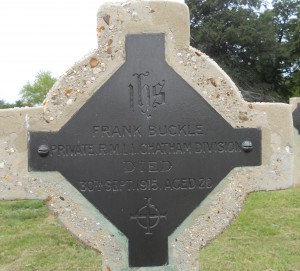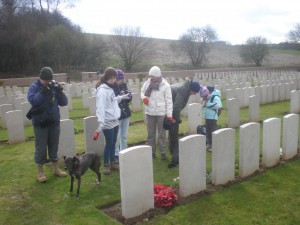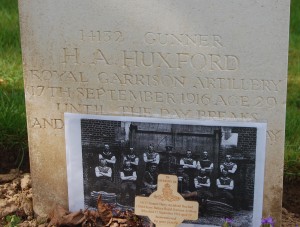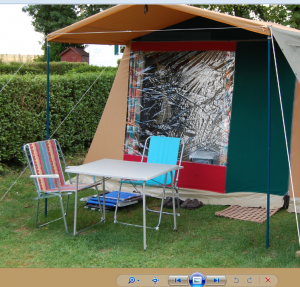Sarah starts this series of articles of her family’s experiences on visiting the battlefields of the First World War.
During the First World War the “Western Front” ran from the Channel coast to the Swiss/French border. For much of the war the Allied forces were fighting along this front. The name has become synonymous with the First World War. Looking at a map of the cemeteries of the war, the line of the Western Front is clearly marked by Commonwealth war grave cemeteries and memorials, showing the sad cost of war on that front.
Around 20 years ago my family and I “discovered ” the battlefields of the Somme in Northern France and since then we have enjoyed many holidays there. We enjoy spending time understanding the battles that took place, walking the countryside to appreciate the ground so fiercely fought for and visiting the cemeteries and memorials and reflecting on the human cost of that war. Since then we have visited areas all along the Western Front and other theatres of the war including Gallipoli and Italy.

Frank Buckle’s grave in Haslar, near Gosport
Since starting “Wokingham Remembers” I have begun to visit the graves of those men remembered on the memorial and this has taken us to different areas in search of the stories of Wokingham men. Seeing the places the men fought and died can be quite sobering but of course today few traces of the war remain and there is some wonderful countryside to be enjoyed. I will try to tell a little about those places then and now and perhaps inspire others to visit.
About 15 years we met a man (Michael Stedman) on our campsite on the Somme, he had just written a wonderful guide book “Thiepval” part of Battleground Europe series. We bought our first guidebook and over the years have added the whole series to our collection! Small areas are thoroughly examined and the battles fought there explored. There are always car tours and walks in the books and many of these walks have become family favourites. We have learnt so much from these books and the release of a new one is the excuse for another holiday!
We try to get out and walk as much as possible. To see the ground from the viewpoint of the ordinary “Tommy” and to experience the diverse weather conditions there do give one a tiny feeling of what they endured. Our children have grown up spending holidays studying the first world war and I think must have been greatly influenced by them as they are now an Army Officer and a History researcher ! We have made many friends through our travels , there is quite a considerable ex-pat community on the Somme and in the Ypres area and many, many others who spend whole seasons out there , writing and researching or just remembering.
A great many people in this country will have a relative who died along the Western front and a really interesting project can be to find his grave or memorial and to find out a little about what he was involved in prior to his death. Here the Commonwealth War Graves Commission will be an essential tool. On their marvellous website are listed all the men and women who died in the 2 world wars and have CWGC graves. This is the vast majority of those who died. The website is very easy to use and combined with other search tools such as Ancestry and Find my past can help build up a proper family tree of a casualty.
We found a great-uncle of my husband’s buried on the Somme and eventually saw the actual war-diary entry of the day he was killed, at the National Archives in Kew. We found out what he was doing (laying a telephone cable) and where he was injured. We know where he died (at a casualty clearing station) and the route he was evacuated back along (the train line west from Albert). We visit his grave each year and he is remembered with pride .
My grandparents actually met each other (albeit briefly) whilst both serving in the Dunkirk area in 1918 and although I’ve hunted I cannot find any remnants of the hospital where they were both stationed.
So family history research will take most of us back to a member of the Armed forces who fought in the First World War.
Over the years there has been a general increase in the number of visitors to the battlefields, certainly France and Belgium. A great many secondary schools now travel there for a short visit and see the main memorials and cemeteries. We have seen many new memorials erected many by the Western Front Association to remember various units and actions. Museums and interpretation centres have opened too, allowing many people an understanding of the war. Those in Peronne and at Thiepval are but 2 in the Somme area. Belgium is also well catered for by a wonderful museum and visitors centres.
Further afield Gallipoli and Asiago have their own very fine local museums often run by the children and grand-children of the founders ,who probably stared with a schoolboy collection of artefacts at the end of hostilities.
It has surprised me just how many people are still interested in this war and who want to see the places for themselves. The local population in most of the places we visit are actually not that interested, but obviously happy that tourists come and those we’ve met throughout Europe are welcoming. We usually take our tent, but there a number of hotels and bed and breakfast establishments in all battlefield areas, most patrons speak some English and lots are ex-pats and thus very helpful with all tourist needs.



